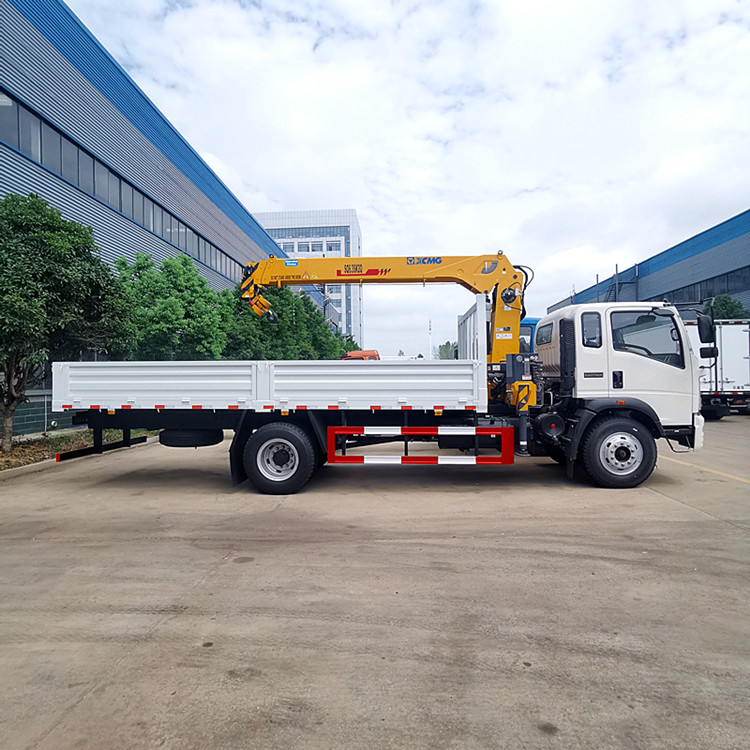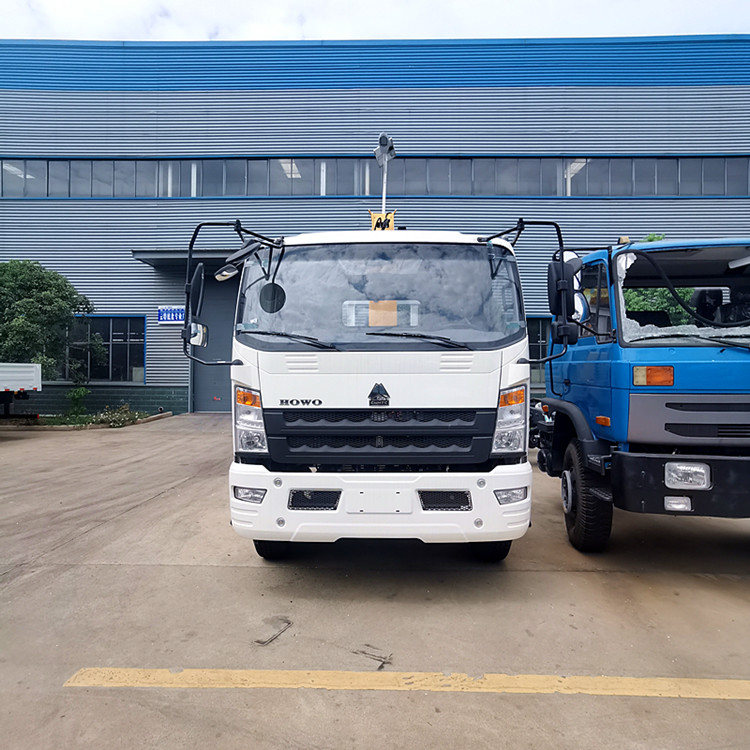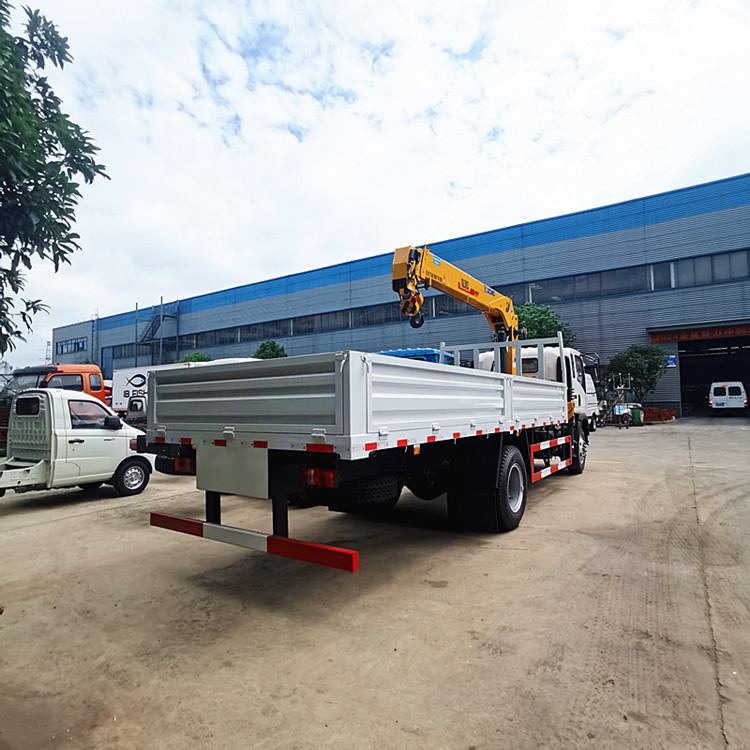Sinotruk Haowo XCMG 6.3 tons
Truck Mounted Crane Introduction of Truck Mounted Crane
A truck crane is a specialized vehicle that combines the functions of lifting and transportation.
It is primarily composed of two main parts: the truck chassis and the crane. The truck chassis provides the vehicle with power and carrying capacity, enabling it to travel on roads and transport goods to their destination. The crane section is used for loading and unloading goods and can flexibly lift, lower, and move heavy objects.
The vehicle is widely used in construction projects, such as lifting building materials; it also plays a significant role in the logistics industry, such as loading and unloading large equipment; it is also utilized in municipal construction, port terminals, and other scenarios, which can effectively enhance the efficiency of cargo handling and transportation.

Characteristics of Truck-Mounted Crane
- Strong Mobility: Based on the car chassis, it can be easily driven on roads like ordinary trucks, quickly transfer to the work site, and flexibly access areas that are difficult for cranes to enter.
- Multiple Functions: Combines both lifting and transport functions. It can lift heavy objects like a crane, with lifting weights ranging from several tons to dozens of tons; it can transport goods like a truck, delivering them directly after lifting without requiring additional transportation equipment.
- Easy to Operate: The crane's control system is designed to be more user-friendly. After proper training, operators can skillfully perform lifting operations and quickly get started.
- Efficient and Economical: In many cases, using truck cranes can reduce equipment input. For example, in small construction projects, a truck crane can handle material lifting and transportation, saving the cost of renting cranes and trucks, improving work efficiency, and reducing costs.

General Use of Truck Crane
- Preparation for Work:
- Site Inspection: Check whether the vehicle site is solid and smooth before use. Soft or uneven ground may cause the vehicle to tilt, affecting operational safety.
- Equipment Inspection: Inspect mechanical components, hydraulic systems, ropes, etc. Ensure that all joints of the crane part are flexible and free of leaks; check that the boom can extend and retract properly, and ensure the rope is not broken or knotted.
- Hoisting Operation:
- Goods Fixation: Securely connect the goods to the hook with a suitable sling (e.g., hooks, slings). If the goods have sharp edges, protective measures should be taken to avoid damaging the spreader.
- Lifting: Operate the crane's control device to slowly and smoothly raise the boom and lift the cargo. Maintain balance during the lifting process to avoid shaking the goods.
- Movement and Positioning: Use the movement function of the vehicle chassis and the rotation and extension of the boom to move the cargo to the designated position. During this process, the operator should always pay attention to the surrounding environment to prevent collisions with other objects.
- Transport Operation:
- Goods Placement: After lifting is complete, place the goods securely in the vehicle's cargo compartment and fix them to prevent movement due to bumps and turns during transportation.
- Travel Transport: Drive the vehicle to its destination like a regular truck. However, pay attention to the change in the vehicle's center of gravity since the cargo is loaded, so it is necessary to control the speed and drive smoothly.










